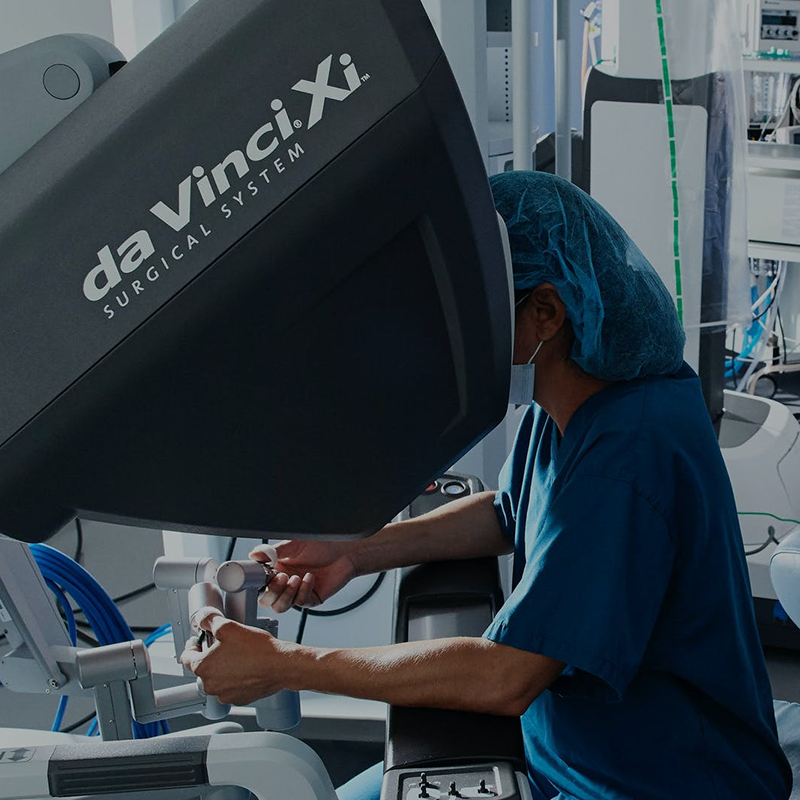Bariatrics
Obesity is linked to many chronic health conditions, including diabetes, osteoarthritis, sleep apnea and heart disease. Diet and exercise alone frequently aren’t enough to help you lose weight and keep it off, bariatric surgery can help. Bariatrics is a category of minimally invasive weight loss procedures designed to reduce appetite and is known to be safe. Bariatric surgery is recognized to be the most effective weight loss therapy available.
Bariatric Procedures We Perform

Gastric Sleeve
Gastric Sleeve surgery creates a smaller stomach. This keeps your stomach’s function intact but patients feel satisfied with smaller meals . The surgery is performed with laparoscopic or robotic instruments which decreases pain, and scarring. Also the surgeon removes part of the stomach which produces ghrelin. Ghrelin is a hormone which can drive hunger. So you feel less hunger between meals. This procedure is most effective when accompanied by a healthy diet and other lifestyle habit changes.

Gastric Bypass
A Gastric Bypass is a form of weight-loss surgery that involves both your stomach and small intestines. The surgeon creates a small stomach pouch to which the small intestine is attached. The rest of the stomach and a small portion of intestine are bypassed yet are kept intact. Similar to a sleeve gastrectomy patients eat less because they feel full with smaller meals and another hormone is affected which helps curb hunger between meals.

Duodenal Switch (DS)
A Duodenal Switch is a surgery which has been around for several decades. Not all surgeons were trained to perform these procedures. But now because of improvements in technology, these surgeries are safe and very effective. For some patients there may be some advantages to considering a DS . To put it simply a DS combines a gastric sleeve and gastric bypass, therefore altering the stomach and small intestine. The combined effect is more powerful. Patients eat less because of a smaller stomach, they feel less hunger and may even not absorb some calories. Deciding to have a DS is best made with the surgeon’s input.

SADI-S
SADI-S—which stands for Single-Anastomosis Duodenal Switch—is a modification of the Duodenal Switch procedure that similarly alters the stomach and the small intestine. It essentially is a simplification of the DS and may have some advantages. . This procedure also reduces appetite and calorie absorption.

The Technology We Use
Our surgeons use the DaVinci Robot to perform minimally invasive bariatric procedures. This innovative technology offers better visualization, dexterity, range of motion, and precision. It also produces more consistent patient outcomes. The surgeon can customize the settings for each procedure and control the machine’s every move from a console.
Our Bariatrics Surgeons
Click On A Physician’s Name To See Their Profile:
Contact Us Today
For life-threatening emergencies call 911
"*" indicates required fields
Connect With Us
If you’re looking to schedule a colonoscopy in McKinney, TX, you’ve come to the right place. As the center for surgical excellence, Methodist McKinney Hospital has skilled surgeons and advanced technology to perform bariatrics for our patients. Contact us at the link below to get more information or to schedule an appointment.





